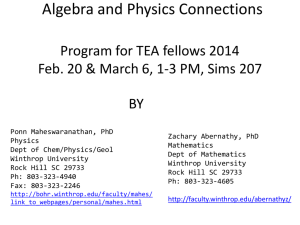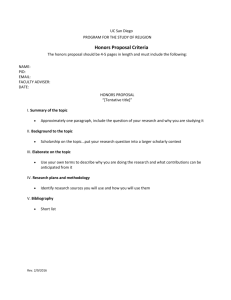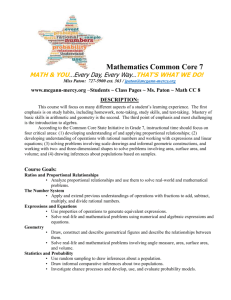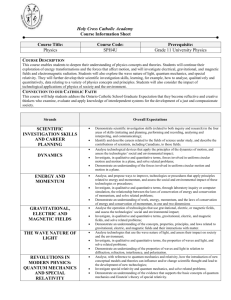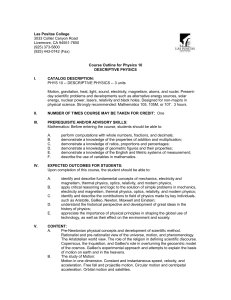Grading Distribution - Piscataway High School
advertisement
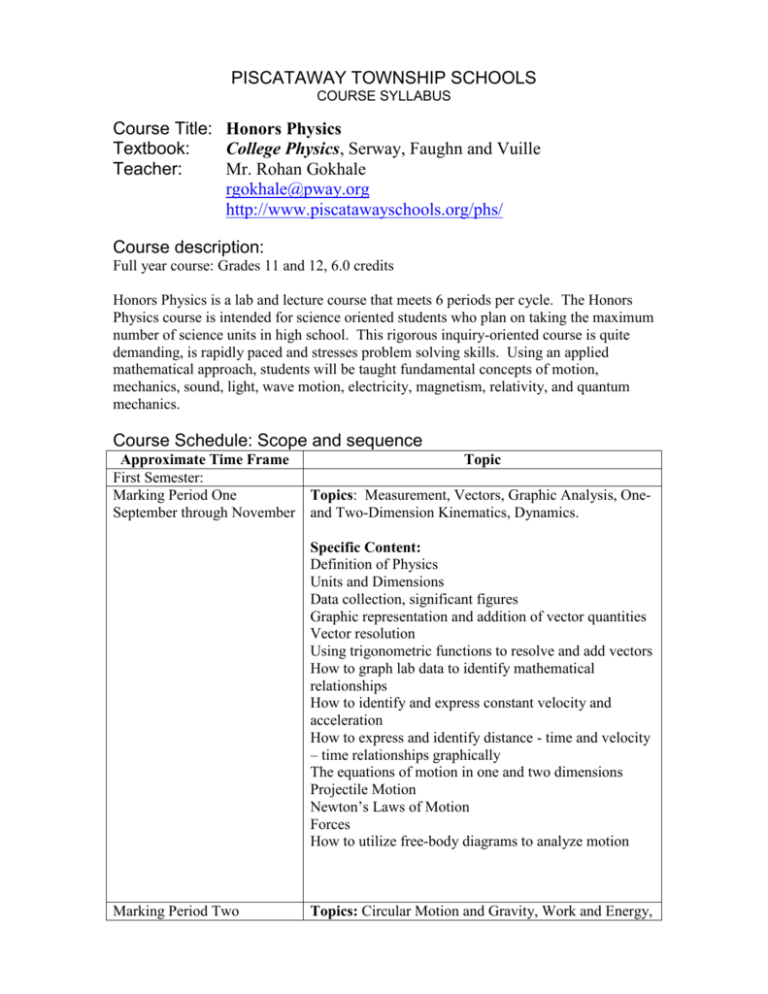
PISCATAWAY TOWNSHIP SCHOOLS COURSE SYLLABUS Course Title: Honors Physics Textbook: College Physics, Serway, Faughn and Vuille Teacher: Mr. Rohan Gokhale rgokhale@pway.org http://www.piscatawayschools.org/phs/ Course description: Full year course: Grades 11 and 12, 6.0 credits Honors Physics is a lab and lecture course that meets 6 periods per cycle. The Honors Physics course is intended for science oriented students who plan on taking the maximum number of science units in high school. This rigorous inquiry-oriented course is quite demanding, is rapidly paced and stresses problem solving skills. Using an applied mathematical approach, students will be taught fundamental concepts of motion, mechanics, sound, light, wave motion, electricity, magnetism, relativity, and quantum mechanics. Course Schedule: Scope and sequence Approximate Time Frame Topic First Semester: Marking Period One Topics: Measurement, Vectors, Graphic Analysis, OneSeptember through November and Two-Dimension Kinematics, Dynamics. Specific Content: Definition of Physics Units and Dimensions Data collection, significant figures Graphic representation and addition of vector quantities Vector resolution Using trigonometric functions to resolve and add vectors How to graph lab data to identify mathematical relationships How to identify and express constant velocity and acceleration How to express and identify distance - time and velocity – time relationships graphically The equations of motion in one and two dimensions Projectile Motion Newton’s Laws of Motion Forces How to utilize free-body diagrams to analyze motion Marking Period Two Topics: Circular Motion and Gravity, Work and Energy, November through January Impulse and Momentum. Specific Content: Describing motion in a curved path: application of both kinematics and dynamics Applications of circular motion to planetary motion and gravity Definition of work, Simple machines, The work – energy theorem Gravitational potential energy, linear kinetic energy, rotational kinetic energy, Hooke’s Law, and elastic potential energy The Law of Conservation of Mechanical Energy Non-mechanical forms of energy The impulse – momentum theorem Collisions and the law of conservation of momentum Types of collisions Second Semester Marking Period Three February through April Topics: Rotary Motion, Wave Motion, Light and Optics, Electric Forces and Fields, Electrical Energy and Potential Difference Specific Content: Rotary Kinematics, Dynamics and Energy Simple Harmonic Motion Wave properties Wave behaviors: rectilinear propagation, reflection, refraction, diffraction and interference Physics of Sound The electromagnetic spectrum, the wavelength of light The speed of light The Law of Reflection Refraction, Snell’s Law Diffraction, Young’s Law Marking Period Four April through June Topics: Electric Current and Resistance, Electrical Circuits, Magnetism, Relativity, Quantum Mechanics Specific Content: Coulomb’s Law, Static electricity Electrical potential due to point charges The volt, capacitance, The ampere, Ohm’s Law, Drawing circuit diagrams, Series and parallel circuits Magnetic fields, Electromagnetism Speed of Light Special Relativity and its Consequences Equivalence of Mass and Energy Blackbody Radiation Wave-Particle Duality Uncertainty Principle Atomic Spectra Materials Needed: Acceptable notebook A variety of pencils and pens Textbook Scientific calculator Classroom Procedures: Regarding safety in the laboratory: When asked, you must wear safety goggles Personal apparel should be appropriate for lab work Know what you are doing Know the proper fire drill procedures and the locations of the fire exits and the emergency equipment Report all accidents to the instructor, no matter how minor Do not perform unauthorized experiments or use equipment and apparatus in a manner not specified by the instructor Stay alert in the lab Food and beverages are never allowed in the lab Use extra caution when working with electrical equipment Keep the work area clean and neat Soap and water are available Observation of all Piscataway High School rules and regulations as noted in the official student handbook. Grading Distribution Tests and Quizzes: Sixty-five of the quarter grade. Quizzes will generally be unannounced. They will usually consist of 1-2 questions, and either be a problem from the previous night’s homework assignment, or from the previous day’s lesson or lab. Lab Reports: Twenty-five percent of the grade. Homework: Ten percent of the grade.




